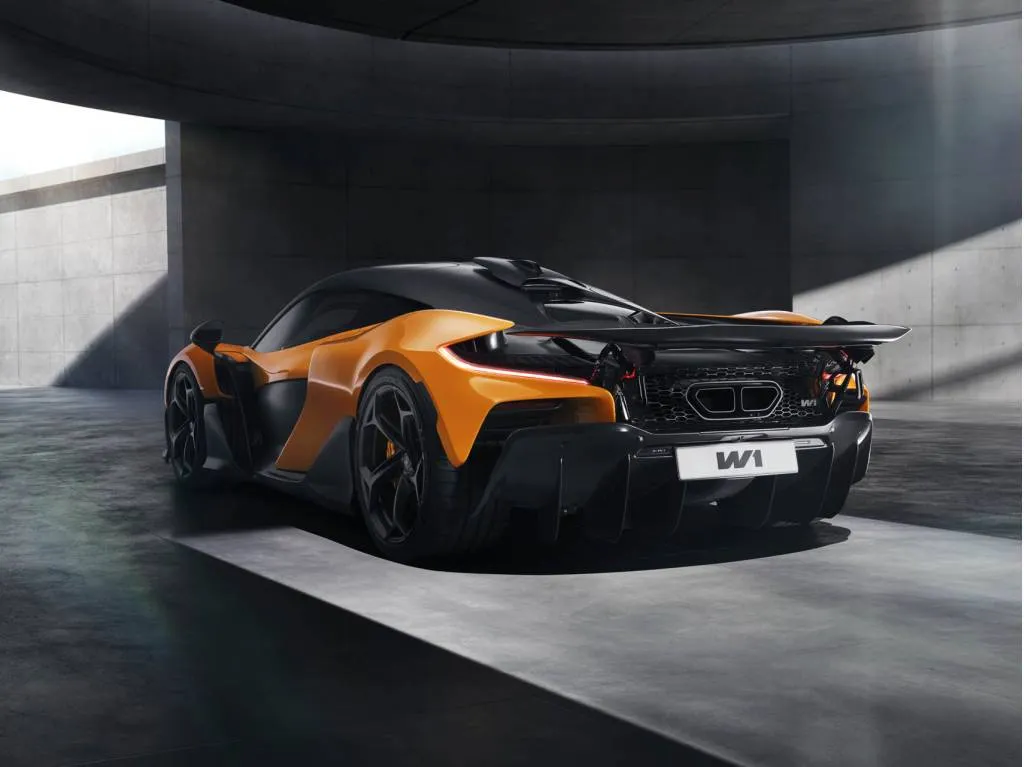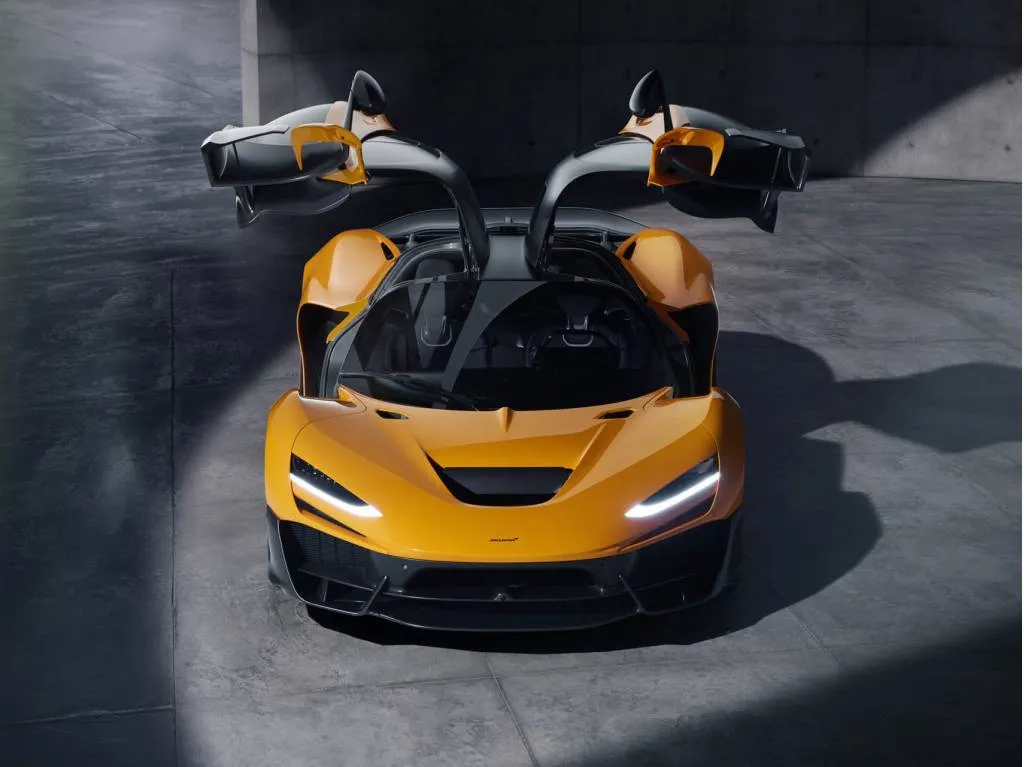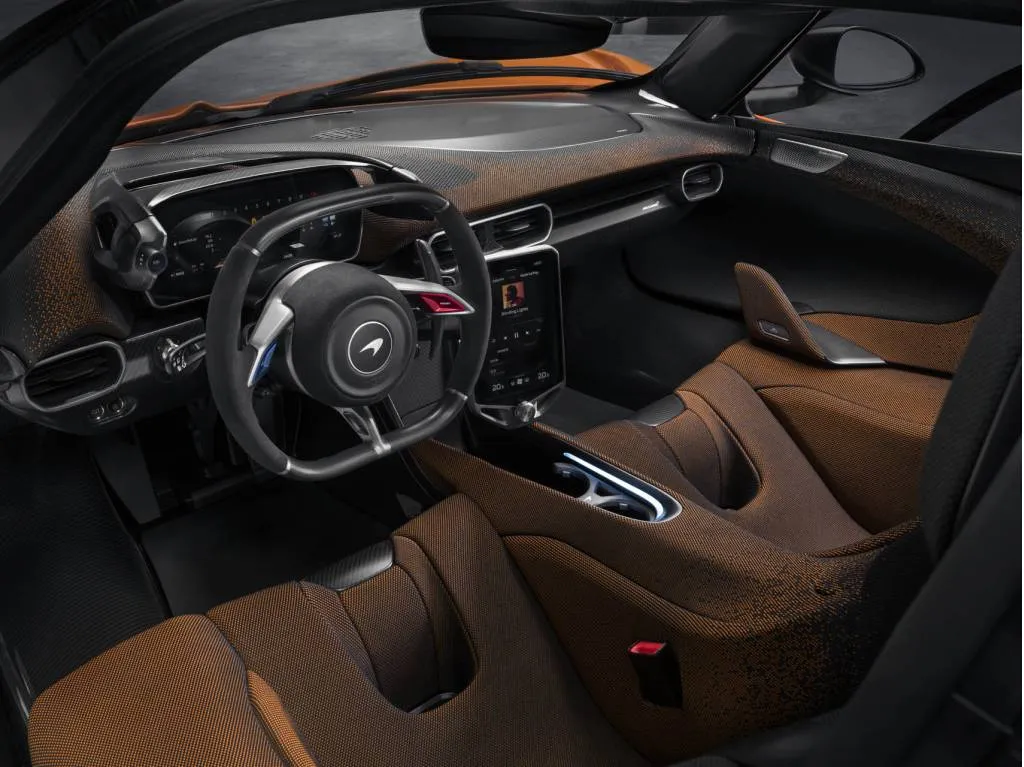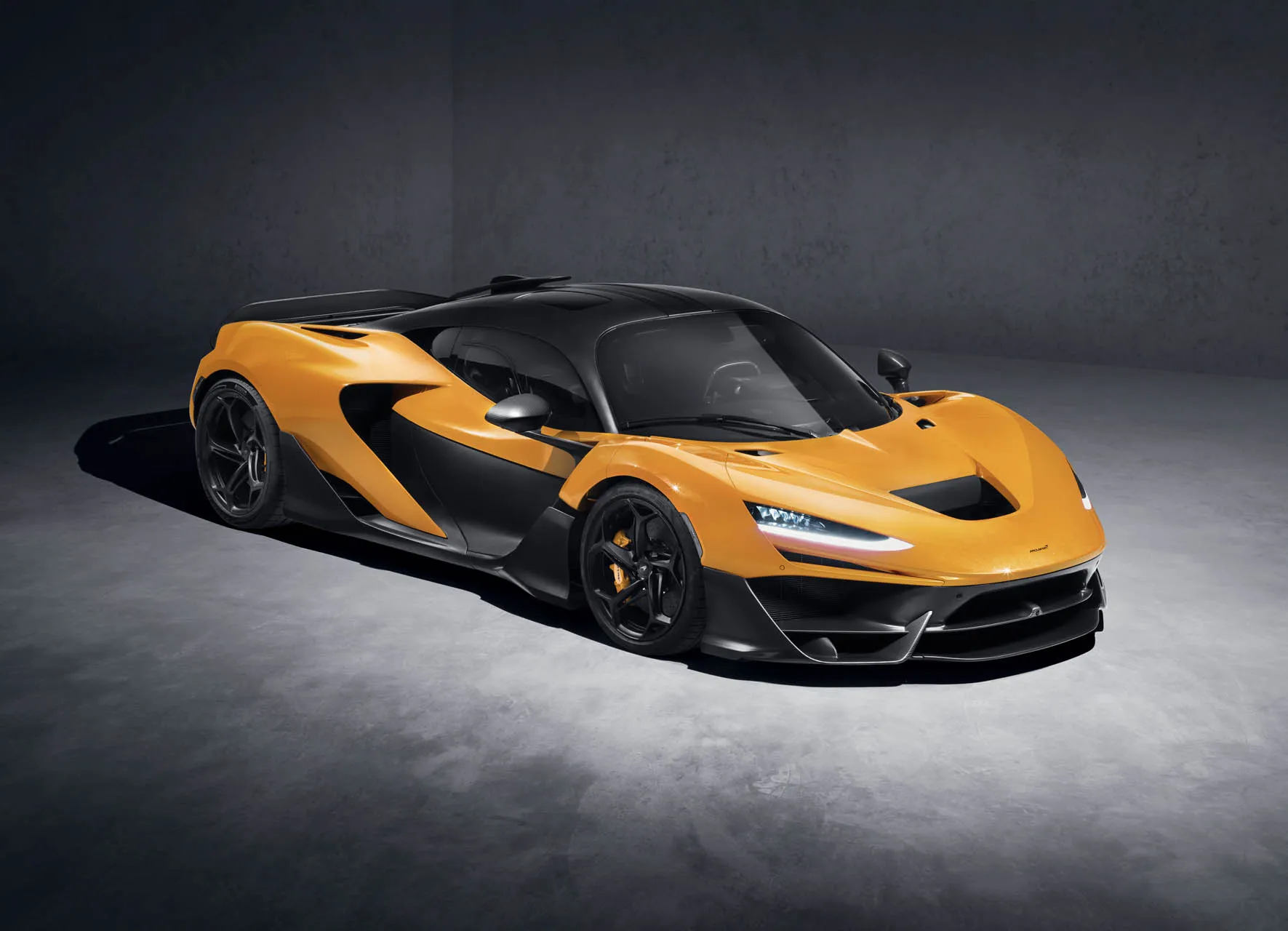- McLaren W1 hypercar is successor to P1
- “W” in the name signfies McLaren’s World Championship mindset
- Plug-in hybrid powertrain features flat-plane crank V-8 and 1,258 hp total system power
- Pricing starts at $2.1 million
A new hypercar seems to show up every few months or so, but the new W1 from McLaren is a different breed.
The W1 is the successor to the P1, one of the original hypercar holy trinity launched a decade ago and which included the equally iconic Ferrari LaFerrari and Porsche 918 Spyder.
Ferrari is known to be working on a successor to the LaFerrari, while Porsche is still considering what route to take for the successor to the 918 Spyder, though the automaker has already toyed with the idea of an electric hypercar with the reveal of last year’s Mission X concept.
McLaren has taken a gamble and released its successor first, and the step in performance over the P1 is significant.
The W1 follows a similar route to the P1 by combining a twin-turbocharged 4.0-liter V-8 with an electric motor in a plug-in hybrid setup. Drive goes to the rear wheels only, via an electronic differential. The V-8 is a newly developed design with a flat-plane crankshaft and 9,200-rpm limit. It delivers 916 hp on its own, or 13 hp more than the total output of the P1. The mid-mounted unit also sits with a 3-degree incline to accommodate the W1’s massive diffuser at the rear.
The W1’s electric motor, a radial flux design chosen for its compact, power-dense properties, adds 342 hp to take total output to 1,258 hp, or more than any previous McLaren. The electric motor is mounted to the side of the transmission, in this case an 8-speed dual-clutch automatic, with its torque fed into the transmission downstream of the clutches. This enables the W1 to deliver combined torque from the V-8 engine and electric motor of 988 lb-ft at the input shaft, McLaren says.
The electric motor draws energy from a 1.384-kwh battery located in the floor of the vehicle to help lower the center of gravity. The battery’s small size means weight is kept low, though electric range is severely limited, coming in at only 1.6 miles.
The powertrain has its own modes on top of the W1’s standard drive modes. There’s a Boost mode which delivers a temporary boost of full electric power, which like in Formula 1 racing can help the driver during an overtake move or powering out of a corner. There are also GP and Sprint modes. GP delivers consistent power for longer track sessions while Sprint dials things to the max for a hot lap.

McLaren W1
The W1 needs just 2.7 seconds to reach 60 mph from rest, 5.8 seconds to reach 124 mph, and 12.7 seconds to reach 186 mph, according to McLaren. The top speed is governed to 217 mph.
The W1 tips the scales at 3,084 pounds (dry), which is helped by lightweight construction that includes a newly developed carbon-fiber tub dubbed the Aerocell. The front of the tub sits higher than normal to integrate lower-front suspension mountings. This eliminated the need for a front subframe, helping to save weight and enabling the optimization of air flow under the car.
The tub’s higher front means the driver and passenger sit with their feet raised, a seating position similar to what you find in a F1 race car. In the W1, the seats are mounted directly to the tub to further save weight, and finding the correct driving position is achieved by adjusting the position of the pedals.
McLaren fans will note the W1 swaps the brand’s traditional butterfly doors for a gullwing design. McLaren said the gullwings were chosen for aerodynamic benefits, as they enable air exiting the front fenders to flow unimpeded into the intakes of the rear fenders and hit the radiators within. The gullwings also improve ingress and egress.

McLaren W1
Moving to the rear, the design takes inspiration from the P1 and introduces a new concept for the active wing, which like on the P1 doubles as an air brake. McLaren calls the new wing the McLaren Active Long Tail, as the wing is able to extend rearward as much as 11.8 inches, resulting in extra downforce. When the car is set in its McLaren Race mode setting, which lowers the ride height by 1.5 inches up front and 0.7 inches at the rear, and activates active wings at the front as well as extends the rear wing, maximum downforce of 2,205 pounds is generated.
The McLaren Race mode also stiffens the suspension, which like the aerodynamics takes inspiration from F1 racing. It employs pushrods which link to inboard dampers, and also integrates torsion bars and heave dampers. In a quest to reduce weight, certain components, like the front uprights and wishbones, were 3D printed using technology from America’s Divergent 3D.
Stopping power comes from carbon-ceramic brake rotors, plus the aforementioned air brake. The rotors feature an additional ceramic layer that McLaren says improves durability and enables the use of higher-friction pads. According to the automaker, the W1 needs just 95 feet to come to a standstill from 62 mph, and 328 feet to stop from 124 mph. The rotors are activated with six-piston monobloc calipers up front and four-piston calipers at the rear.
The brakes reside within 19 wheels up front and 20-inch wheels at the rear. These wheels come wrapped in Pirelli tires, measuring 265/35 up front and 335/30 at the rear. Pirelli’s P Zero Trofeo RS is standard but serious track drivers can opt for P Zero R tires. A winter tire is also available.

McLaren W1
Lifting the gullwing doors reveals recesses in the roof as well as a front lower empty space to ease entry into the cabin. Glazed sections in the rear three-quarter view of the roof, and optionally in the top part of the doors, provide an airy feel to the interior.
The cabin’s design is relatively spartan, with only padding for the seats and some textiles use to cover carbon-fiber surfaces that form part of the central tub. Even the sun visors are designed with lightweighting in mind; made from carbon fiber, they are just 0.1 inches thick. A steering wheel with a flat bottom and top greets the driver, and features a shift light indicator. The only buttons on the steering wheel—of which there are two—control the powertrain boost mode and the active aerodynamics.
Other controls are also within easy reach of the driver, including the infotainment system’s 8.0-inch touchscreen which features a portrait layout and is angled toward the driver. The system supports Apple CarPlay and features multiple USB ports.
The W1 is priced to start from about $2.1 million and McLaren will build a total 399 examples. Deliveries start in 2026 and all build slots are already allocated, according to the automaker.

buy ivermectin pills – cost candesartan 8mg buy generic carbamazepine for sale
buy accutane for sale – buy accutane without prescription purchase linezolid sale
generic amoxil – order amoxicillin without prescription order ipratropium 100 mcg
zithromax 500mg generic – tindamax 500mg pill order nebivolol 20mg online
omnacortil 40mg oral – buy prometrium generic order prometrium 100mg
oral lasix 100mg – buy nootropil for sale betamethasone online
liquid cialis – cheapest cialis online viagra pills
buy depo-medrol paypal – lyrica 75mg tablet triamcinolone 4mg generic
buy desloratadine 5mg for sale – loratadine usa dapoxetine 60mg pills
buy cytotec paypal – buy generic xenical online diltiazem 180mg sale
purchase acyclovir online cheap – zyloprim sale buy rosuvastatin 10mg pill
purchase domperidone online cheap – order generic domperidone cyclobenzaprine 15mg pills
inderal 20mg canada – oral inderal 20mg buy methotrexate 5mg generic
brand esomeprazole – buy topiramate paypal buy sumatriptan pills
order levaquin 500mg generic – order avodart 0.5mg for sale zantac 150mg pill
meloxicam 15mg us – tamsulosin 0.4mg price where can i buy tamsulosin
order zofran 8mg – buy aldactone 100mg simvastatin 10mg oral
valacyclovir price – buy propecia generic generic diflucan
provigil 100mg pills provigil 200mg sale provigil 100mg us provigil over the counter order modafinil 100mg without prescription buy generic modafinil for sale provigil 200mg pills
Good blog you be undergoing here.. It’s hard to on strong calibre belles-lettres like yours these days. I justifiably comprehend individuals like you! Take guardianship!!
More articles like this would remedy the blogosphere richer.
buy azithromycin without a prescription – floxin 400mg us metronidazole buy online
order semaglutide 14mg without prescription – cyproheptadine 4mg drug cyproheptadine us